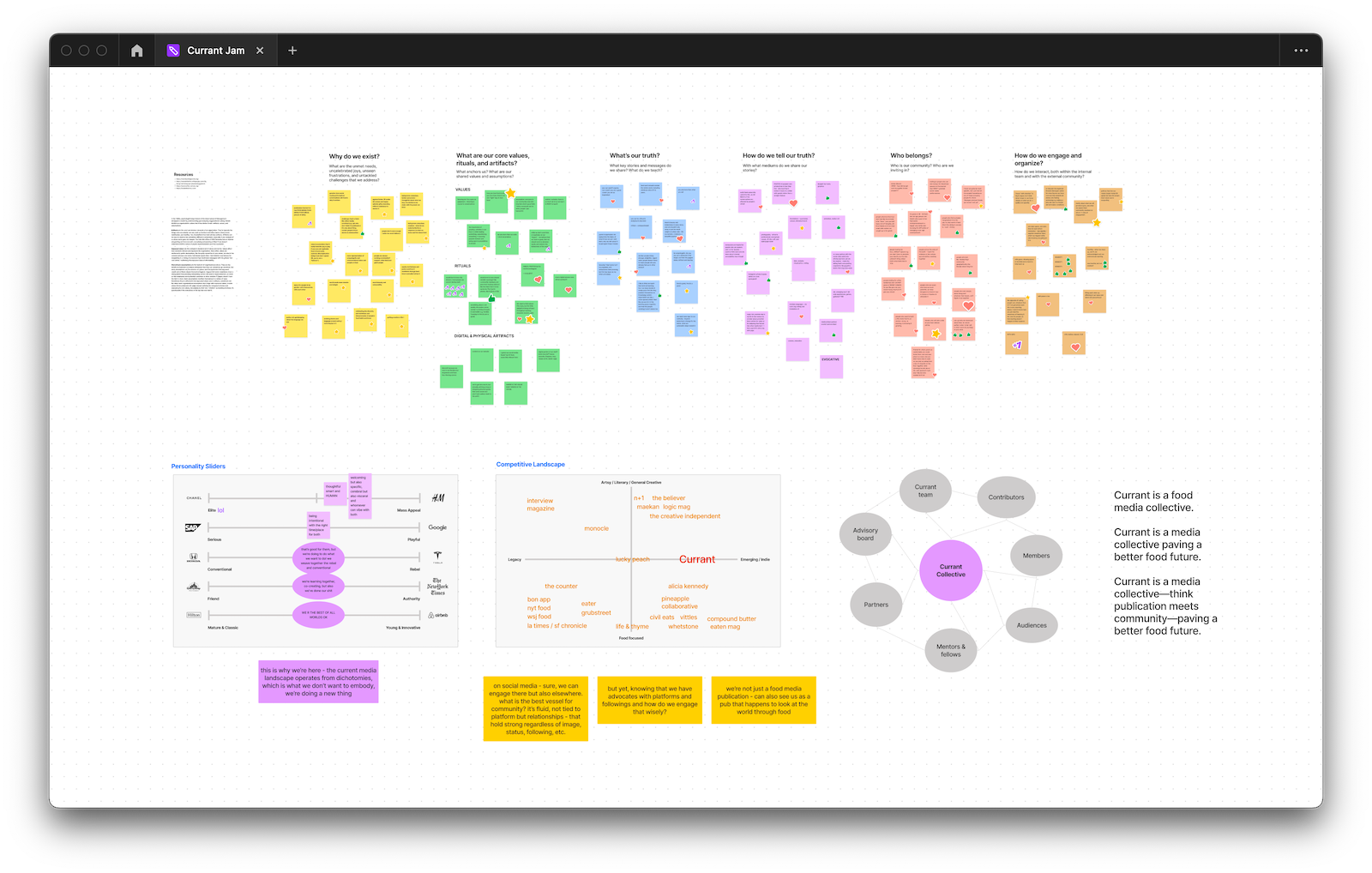This essay originally was published on September 7, 2023, with the email subject line "CT No.183: From willy-nilly content to productization."
For content professionals, scoping a client project can be tedious. The process typically relies on a combination of imperfect factors: anecdotal memories from previous projects, assumptions about staff and stakeholders, best guesses about budget. There’s also an overwhelming temptation to mirror the client, whose timelines we take as gospel, and to assume contracting parties know what deliverables they’ll need. Most fatally, we respond to open-ended requests with open-ended scopes.
In the past few years, productization has emerged as a model for balancing these tendencies. Instead of molding services onto variable client requests, consultants offer a selection of detailed, relatively inflexible products, which have been designed and tested to ensure that they can be successfully and profitably executed. This creates an additional layer of structure and protection within open-ended or dynamic projects. (Productization is also a brand choice: “products” are typically sold as-is, while “services” suggest much more engagement and flexibility.)
Productization for freelancers
A few years ago, when I was still working in business development, a mid-size agency hired me to develop and run their product suite.
At the time, my relationship to development work was strained. I was tired of the pressure to create scopes that were unrealistic and underpriced. Tired of the understandable resentment from staff who had to execute those plans. Tired of consternation from leaders when the projects weren’t profitable. And I was especially tired of how this cycle repeated without any tangible benefits.
But building a product system for the agency was an appealing prospect. It presented an opportunity to define clear ways of working, create a standard for profitability, and provide strong data to balance the emotional decision-making that happened during the proposal process.
I ended up spending the next few years developing and optimizing the agency’s suite of brand, digital, campaign, and content products. The path to product clarity wasn’t always smooth, but the results were powerful. Scope creation was super fast and less contentious, staff and clients had a clearer understanding of what they’d agreed to, and the account team had clear boundaries to reference when work spun out of control. And after a year of implementation, there was a mountain of solid, highly useful data on performance and profitability.
After I left that job, I started consulting. At first, I took a more informal and tentative approach to scoping. I was eager to work, and I didn’t feel ready to articulate my offering yet. But a few months in, I found that this wasn’t yielding the kind of interactions I wanted. Thinking back to my experience working with the agency, I returned to the idea of productization.
Establishing your voice
Sometimes freelancing is a stopgap, or a side hustle, or something you “fall into.” No matter how you got there or how long you plan to stay, it pays to think of yourself as a business. Documents like scopes, contracts, and invoices protect your time and peace. They transform you from “someone’s friend who can do a website” into “a vendor we are obligated to pay.” They are also your first line of evidence when it comes to settling misunderstandings like payment disputes and missed deadlines.
Clear, concise documentation is good, but you can go further when setting yourself up for success. Defining products means owning a perspective on what constitutes a best practice. It also allows you to present specialized skills or options that the client hasn’t considered. Say you’re a copywriter with SEO chops. Your standard web copy product might be called “SEO-optimized Copy” and have an “SEO Research” deliverable. Maybe the client wasn’t planning on paying for that, but they probably see the value of keeping it in. Whether or not they survive negotiations intact, presenting products establishes you as a more active, expert voice in the relationship.
Protecting your scope
Some freelance projects are open-ended by design. If you’re comfortable with that, set a nice high hourly rate and take the work as it comes. But if you’re looking for a more structured engagement (the kind that allows you to balance multiple, structured projects), then products with clearly defined activities and deliverables are your friend. They provide a framework the client can fit into and checkpoints that help them see the work progressing.
Products also create useful boundaries. Clearly defined deliverables can be pointed at when scope creep starts to happen. If a client isn’t a good fit, a completed product is a logical place to end the relationship.
Managing variation
I hear a lot of the same objections when I talk about productization. Some have said that projects are all different, clients are all different, or that the creative process always looks different. To which I say, Totally! But also, Not really.
Projects tend to have the same general phases: research, exploration, alignment, execution, and refinement. You probably deliver the same few services at different volumes, and have a few standard formats for delivering your work. You might approach creative exploration differently every time, but you probably allot a consistent amount of time for it.
Often, projects vary because clients create variation. This is unavoidable to some extent, but the boundaries defined in products can help reduce it. Clients pay freelancers for expertise and efficiency, so it’s your responsibility to shape the engagement with the benefit of your expertise, and, where possible, to engage in repeated processes that make you more efficient. The goal of productization isn't homogenization — it’s the continuous movement toward a more refined, protected, and profitable process.
Creating your product suite
If you’re early in your career, you’re probably still learning which approaches work for you, and it might be frustrating or confusing to create products right now. You can still prep by tracking time to specific project activities, so you start to understand which tasks repeat and how long they take. You’ll start to see what products suggest themselves. More seasoned freelancers can probably develop and start testing products right away.
Name and define your deliverables
A good rule of thumb is that a product should have at least one substantial deliverable. For example, a brand strategy project could be divided into these products: Research, Brand Workshop, Brand Architecture, and Brand Platform. If the Brand Workshop is an all-day affair with bespoke activities, it’s a product. If it’s a two-hour alignment worksession, it can probably be folded into another product.
Once you’ve created your list of products, each of them will need a standard definition, activities, deliverables, timeline, and price. At the beginning, these are just estimates (though you might have old project scopes or time tracking data that you can base them on). It’s fine if they’re not perfect — tracking time to products over the course of different projects will teach you a lot about how they need to evolve.
Create proposals
Products are more rigid than services, but they’re not totally inflexible. For proposals, you can adjust for client context by tweaking certain elements. If a client has a tight timeline, you can adjust a product’s timing and reduce the deliverables. Later, you can compare the scoped version with the version you actually executed. Was the scoped timeline unreasonable, even with the reduced deliverables? On the next proposal, you’ll know that’s a place to stand your ground and stick with the original product timing.
That said, you’ll probably do less alteration than you’d think. It’s surprising how universal a thoughtfully designed product can be. For example, a brand identity might have a solid, repeatable process for doing design research, generating and refining a design direction, and executing on a standard list of brand assets. That’s a big chunk that you can successfully productize. The most variable parts — typically content or asset creation — can be addressed with a future addendum (when you have a better idea of what you need to make) or a different product. Another approach is to develop different deliverable tiers for small, medium, and large companies to plug into the product.
Get smarter
Once you’ve completed a few projects with products, you can compare your performance to your product standards. You’ll have product time-tracking data, plus the anecdotal experience of working on the products, and you’ll use both to decide how they should evolve.
Say you’ve executed the same research product as part of three different projects, and it consistently exceeded the product timeline. You’ve got options: you might extend the product timing (which should have an impact on the price), or update your process, or remove a deliverable that clients didn’t need. If alignment was an issue on two of the projects, you might update the product to kick off with a clarifying workshop.
It’s incredibly valuable to have a standard place to record and implement changes, so you don’t repeat the same mistakes. Over time, you’ll start to understand which products you excel at delivering and where you consistently struggle, which will suggest places to expand your offerings (or raise prices), as well as areas where you might want to up-skill.
Be a business
Building the product suite for my consulting business was a revelatory exercise. It was essentially the creation of a practical vision for my business. What I was excited to work on, I productized. What I can technically do, but don’t really want to, I left out.
Articulating the process, hours, and pricing for products forced me to define how profitable I wanted to be, which I hadn’t really considered on previous freelance projects. Now, when I have to scale a product for a client, that relationship to profitability is always on my mind, and I have some clear places I can adjust to protect it. Since it’s still early days, I’m not under pressure to perform to the product standard. I’m tracking and learning, and a few projects from now, I’ll be ready to optimize.
As more creatives enter the freelance pool, either by necessity or choice, we owe it to ourselves to understand and protect our profitability on projects. Developing products and collecting product-level data helps us do that — the better data we have, the more strategic we can be. The best time to start is right now.
Tina Morgan is an operations specialist with a background in writing and business development. She creates systems that support sanity and clarity during growth and transformation periods—including product systems.
Hand-picked related content







